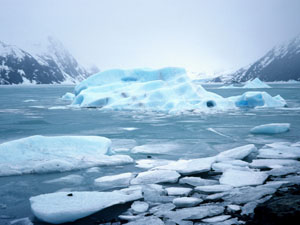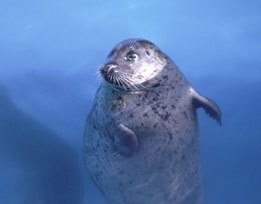
| Sea
Ice Sea ice has a dramatic effect on the physical characteristics of the ocean surface. It isolates the sea surface from the usual atmospheric forcing; thereby strongly modulating the normal exchange of heat and mass between the atmosphere and ocean. In addition, sea ice affects albedo, the exchange of heat and moisture with the atmosphere, and the habitats of marine life. Sea ice also plays a significant role in the thermohaline circulation of the ocean (IPCC). |

Southern Ocean around Antarctica.
Glaciers and ice sheets also influence the sea level directly: As there is a finite amount of water on the Earth, there will be less water in the oceans when large amounts of it is bound up in ice sheets on land, and vice versa.
Snow and ice influence the global climate, mainly through their albedo, acting as a cooling factor.
Ground-based observations seem to show a reduction of about two weeks in the annual duration of lake and river ice cover in the mid- and high latitudes of the Northern Hemisphere, over the 20th century. (IPCC)
